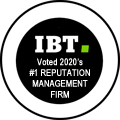Improve Readability and Increase Conversions with White Space
Robert Gibb, May 30, 2013
 When something is easy to read, I read more of it.
When something is easy to read, I read more of it.
I read more of it and, more often than not, reach the end of it. I reach the end of it and, if I'm on the web, find myself looking at a link. Sometimes a fancy link with cool effects that reads "BUY NOW." Other times, a standard hyperlink that says "Learn more."
And because I like what I read (simple text for a simple guy), I usually click on that link.
Find me someone who doesn't like clear, concise, easy-to-read language on the web and I'll hear them out. I'll hear them out then give them a test. I'll give them a page of web copy written by a writer proficient in SEO copywriting and a page written by a novelist who writes with lengthy paragraphs. I'll then hook them up to my CIA-employed father's polygraph and ask them a simple question: Which one was easier to read?
There are many things that make something easy to read – dialogue, tight wording and use of the present tense – but there's one thing that makes a piece incredibly easy to read.
White space.
See what I did there?
How I Know Writing with White Space Improves Conversions
At the end of my college career, I started becoming interested in web writing, website design and search engine optimization. After creating a few of my own personal websites and reading various books on SEO, I discovered my true passion was for writing. Even though I appreciated the art of web design and SEO, writing lit a fire in me.
So I decided to look into web writing as a career. That's when I came across a little gem of a writing course offered through American Writers and Artists Inc. – an online company started by one of my mentors, Mark Morgan Ford.
Mr. Ford, known in the copywriting world as Michael Masterson, showed me how to write clearly and concisely. He also showed me how to sell a product or service to a customer. The course offered me stacks upon stacks of successful sales letters and, in all these letters, I saw a common theme: religious use of white space.
Some writers of these successful sales letters preferred to use ellipses over hyphens, storytelling over fact-telling. But one thing remained constant in ALL of their copywriting styles: whitespace galore.
These great copywriters knew that people wanted something easy to read, so they gave it to them. There was no question about it. With paragraphs broken up into short, simple sections, readers could get the information they wanted quickly and easily. Their emotions were appealed to and they became better informed. Why? Because they were being talked to in a conversational manner – a cornerstone of great copywriting and web writing alike.
The sentence is the short breath. The paragraph is the deep breath. A paragraph refreshes the page much like a deep breath refreshes the thinking process of a conversationalist.
Start Using More White Space in Your Writing Today!
The great thing about whitespace is that it requires nearly no effort at all to implement. Unlike fixing grammar and swapping vocabulary, all you have to do is hit ENTER. No thesaurus or proofreading required.
As you continue to discover your writing voice, knowing when to use white space will come to you naturally. But, until that time comes, practice isolating the following with white space.
· Dialogue
· Subtopic of an overarching topic
· Key points within those subtopics
· Important phrases and words with a lead-in (see how I used "White space" in the first section of this post.)
· Sentences that significantly impact the reader and deserve their own line
When you use white space more freely, your copy instantly becomes more readable and inspires more conversions, to secondary pages, contact forms and shopping carts.
Make your web copy more user friendly with white space and watch the fruits of your website's readership multiply!





